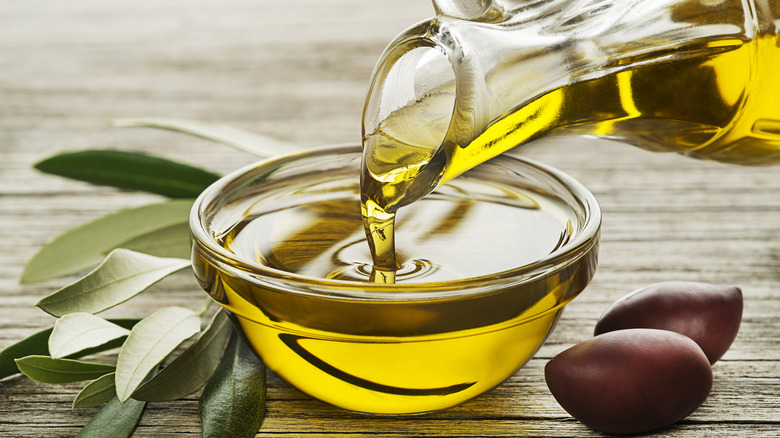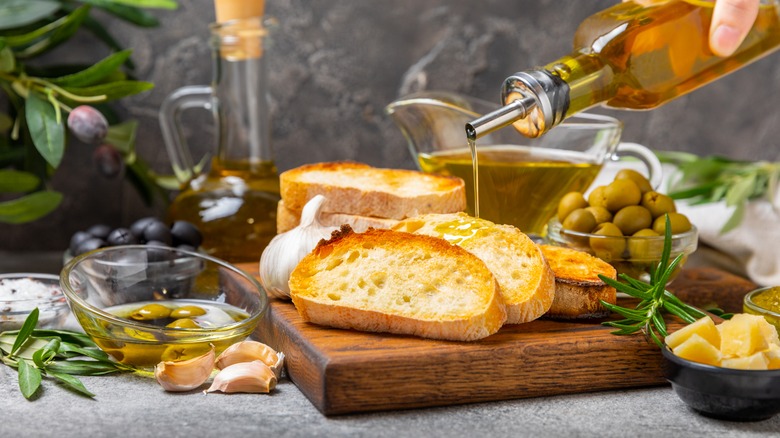Why Does The Harvest Date On Olive Oil Matter?
Olive oil isn't just the backbone of Mediterranean cooking or an abundant source of inflammation-fighting antioxidants; it's also a beloved ingredient for its rich, complex tasting notes. This is particularly true among its higher-quality varieties. Virgin, or refined olive oils, are entirely different from extra virgin olive oil. Just as there are fine wine and cheese enthusiasts with palates finely tuned to nuances of flavor and texture, top-shelf extra virgin olive oil has its own connoisseurs who love comparing how factors like olive varieties, growing regions, and harvest conditions impact the flavor, appearance, and texture of the oil.
Unlike wine and cheese, however, instead of improving with time, the flavor and nutritional qualities of olive oil decrease due to the effects of oxidation on its acidity levels. This is true of all types of olive oil, though your bottle of premium extra virgin can hold on a little bit longer, having started off less acidic in the first place.
There are two dates you might find on the label when buying olive oil. One of these is the harvest date, which indicates when the olive fruits were picked and pressed. A harvest date — sometimes referred to as a pressing date — isn't found on all bottles of olive oil, but if yours has one, take heed! The harvest date is incredibly helpful in determining the freshness of the liquid gold that lies within.
Why olive oil's harvest date is key
To understand the harvest date's significance, it helps to understand the other important date on your oil's label. While a harvest or pressing date is relatively rare, a "best use by date" can be found on any bottle. Manufacturers set this date at two years after the oil was bottled.
However, the best-by date doesn't tell an oil's age — it only indicates when the oil was bottled, not when the olives were pressed. Olive oil producers don't always bottle their oil immediately after pressing; it can sit in silos for years before being bottled and given its best-by date. Only a harvest date tells you exactly how old that oil really is, and when you're dealing with a pricier, top-shelf product (the caliber of olive oil Martha Stewart advises you to save for your oil-forward dishes), you want the freshest possible.
That said, the absence of a harvest date doesn't necessarily mean you're dealing with a shoddy product. If it's not on your bottle, you could be looking at a blend of oils with various harvest dates, or it could be one of those two-years-in-a-silo oils, and no producer wants to flaunt that. For your daily cooking oil, the lack of a harvest date is fine; olive oil storage facilities are top-notch at preventing oxidation. For your good stuff, though, always look for a harvest date, and for peak flavor, make sure it's less than a year ago.

